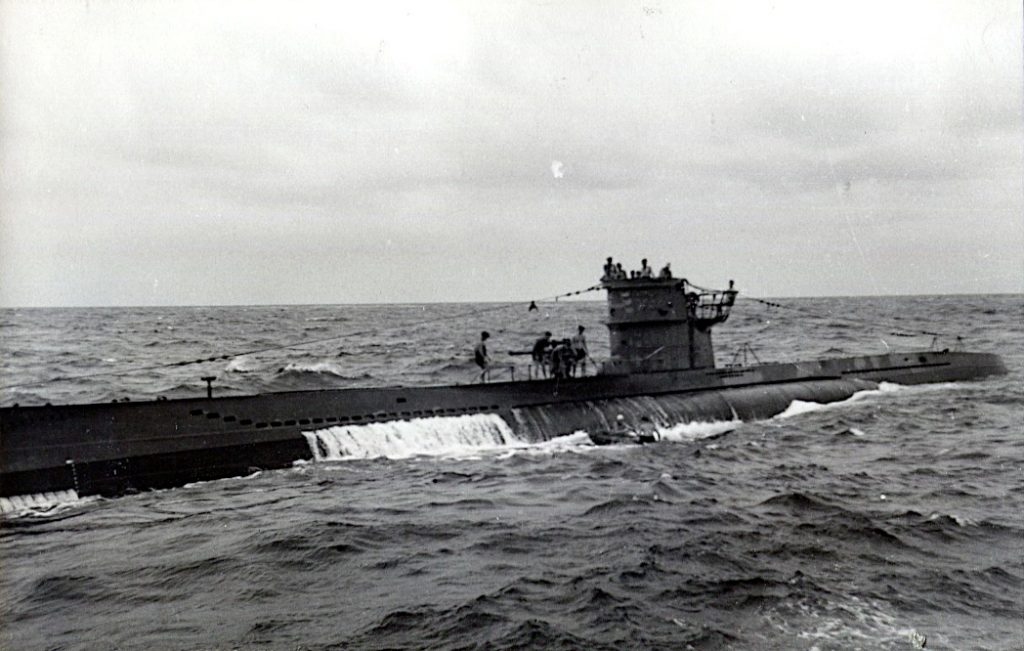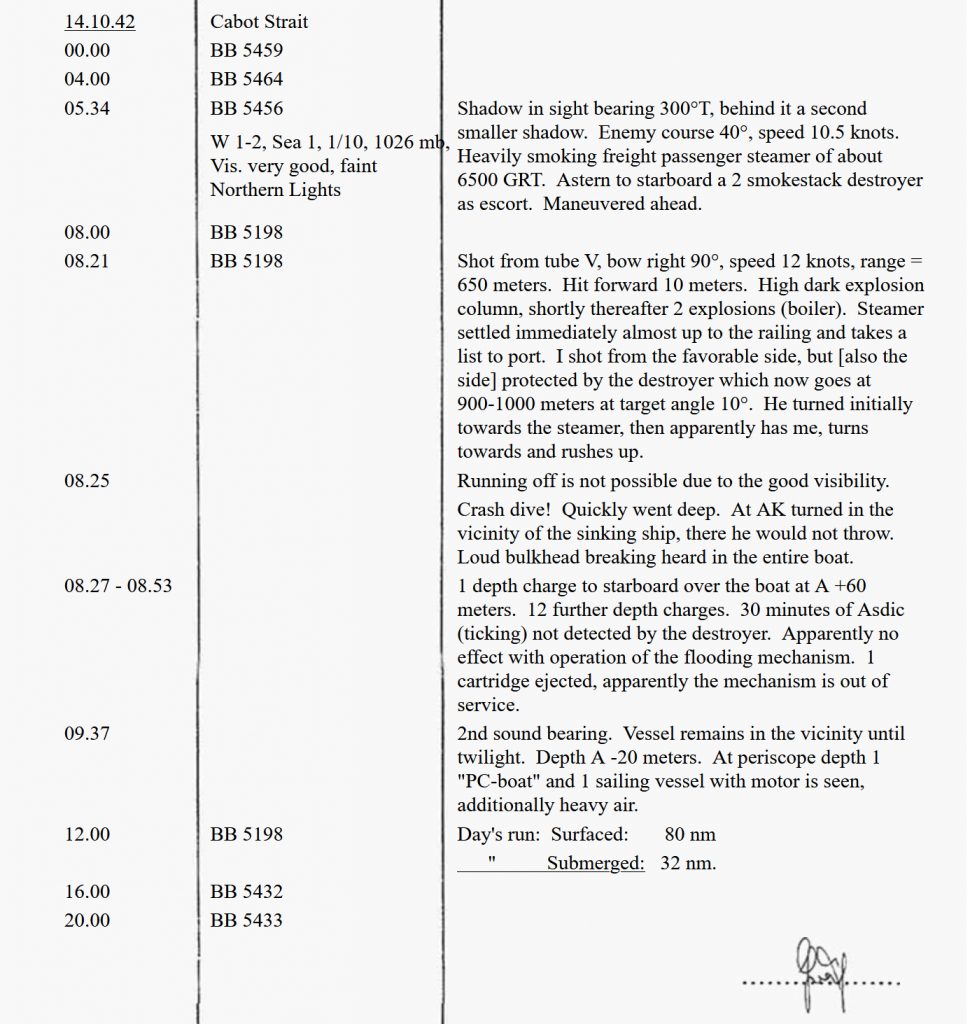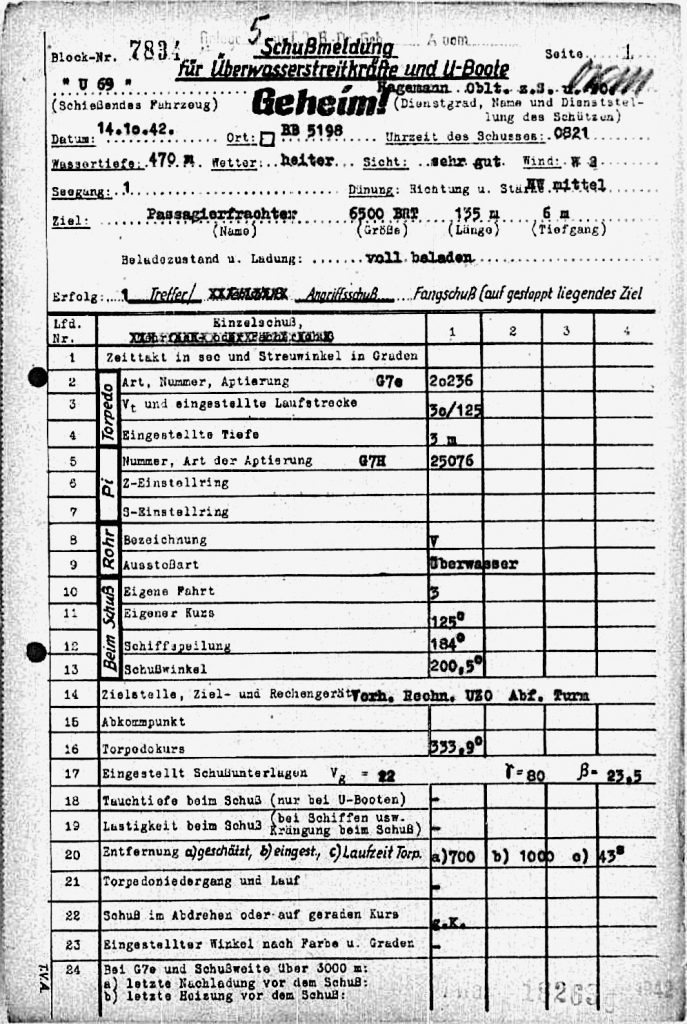The U-boat attacks
U-69’s logbook, October 14, 1942; 1:04 am Newfoundland Time:
“Heavily smoking freight passenger steamer of about 6500 Gross Registered Tons. Astern to starboard a two-smokestack destroyer as escort.”
For three hours, Oberleutnant Gräf followed the ferry and what he wrongly believed to be a destroyer. U-69 sailed on the surface for a better firing position. Gräf was confident his conning tower would be difficult for the enemy to spot at night. He pulled 650 metres abreast of the ferry, swinging U-69’s stern towards the target.
At 3:51 am in the conning tower, Torpedo Officer Johannes Hagemann fired one torpedo from the stern tube. In 43 seconds, it hit S.S. Caribou amidships on the starboard side. The explosion blew seawater and debris into the air. Racing away at full speed, the U-boat crew heard the ferry’s boilers explode. Hagemann had scored a perfect hit.
Now Gräf faced a new threat. Having spotted U-69, the escort was charging forward to ram the U-boat.
“Crash dive!” Gräf yelled.
Deep underwater, he steered U-69 towards the noise of the ferry’s breaking bulkheads. Maybe the enemy would not drop depth charges below any swimming survivors. This was the worst time. Surrounded by the pinging sonar of the “destroyer” hunting them, U-69 released a bubbling sonar decoy. One depth charge exploded close overhead. Then twelve more. After four hours, Gräf cautiously raised U-69 to periscope depth. He sighted two vessels and aircraft. The Canadians were still searching for them.
U-69 retreated back over the shipwreck they had created.





